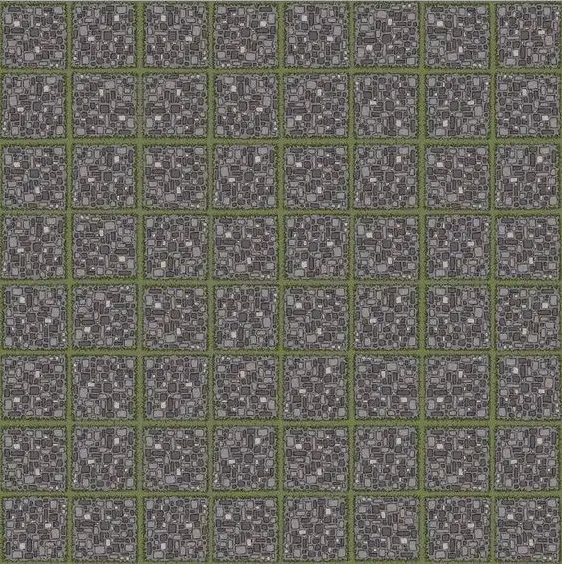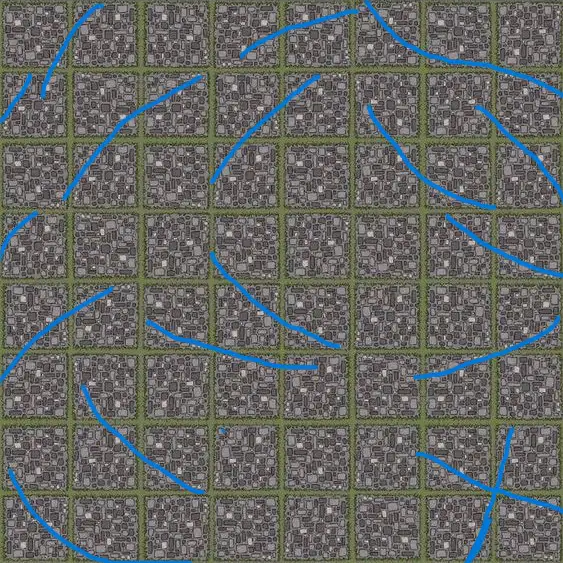Optical illusions never fail to fascinate us, offering a unique combination of fun and mental challenge. Today, we’re diving into a particularly tricky puzzle: finding the curved line in an image. At first glance, the task seems straightforward. But as you focus on the details, you’ll realize this is no ordinary challenge. Your perception and logical thinking are about to be put to the test!
So, can you spot the curve? Before we reveal the truth, let’s break down the puzzle step by step, explore the common mistakes, and uncover the science behind this deceptive illusion.

Why This Puzzle Is So Deceptive
At first look, the image seems to contain straight lines and geometric patterns. But as you scan the grid, a series of curved blue lines appears to emerge. This is the trick. Your brain plays a clever game of connect-the-dots, creating something that isn’t really there.
Why do so many people fall for this? The illusion takes advantage of how our visual system processes patterns and contrasts. It creates a perceived continuity, fooling your brain into thinking a curve exists where there’s only a straight-edged grid.
Common Mistakes People Make
Puzzles like this are designed to be deceptive. Here are the most frequent errors people make while solving it:
1. Trusting Your First Glance
The brain loves shortcuts. At first glance, the curved blue lines seem obvious, and most people accept this visual assumption without questioning it.
2. Overlooking Details
Failing to analyze the grid closely leads to missed clues. The illusion thrives on subtleties, like the arrangement of white boxes within the pattern.
3. Overthinking the Solution
Sometimes, participants try to find overly complicated explanations, assuming hidden designs or complex shapes, when the trick is actually very simple.
Step-by-Step Guide to Solving the Puzzle
To find the truth behind this optical illusion, follow these steps:
Step 1: Observe the Whole Image
Take a step back and look at the entire grid. At first, you’ll likely see a series of curved blue lines flowing through the image. This is your brain’s natural response to the repeating patterns and alignment of shapes.
Step 2: Focus on a Single Section
Now, zero in on a single grid square. What do you see? Each square contains small, white boxes arranged inside. If you examine them closely, you’ll notice they are perfectly straight—no curves in sight.
Step 3: Analyze the Pattern of White Boxes
This is where the illusion reveals its magic. The curved line you think you see is actually a byproduct of how the white boxes align with the grid’s edges. As your eyes move across the image, the placement of the boxes tricks your brain into perceiving a curve.
Step 4: Trace the Line
To confirm the absence of a curve, try tracing along the “curved” area with your finger. You’ll quickly realize that your finger follows a straight path, further proving that the curve is nothing more than an illusion.

The Science Behind the Illusion
This optical illusion is a masterclass in how our brains interpret visual information. The effect relies on a phenomenon called perceptual filling-in, where the brain attempts to make sense of gaps or inconsistencies in what it sees.
How It Works:
- Afterimage Effects: When your eyes scan repetitive patterns like the grid, your brain retains visual impressions momentarily. This creates a sense of flow and continuity, forming the illusion of a curve.
- Contrast and Alignment: The contrast between the white boxes and darker grid lines enhances the illusion. Your brain connects the edges of these shapes, creating a visual shortcut that doesn’t exist in reality.
- Pattern Recognition: Humans are wired to seek patterns, even when none exist. This puzzle exploits that tendency, leading you to perceive a curve where there’s only straight lines.
Why Solving Puzzles Like This Is Beneficial
Puzzles like this optical illusion aren’t just entertaining—they’re also great for your mental agility. Here’s how they help:
- Boosting Observation Skills: They train you to look beyond the obvious and pay attention to small details.
- Improving Problem-Solving Abilities: You learn to approach problems methodically, breaking them into manageable parts.
- Enhancing Cognitive Flexibility: When your initial perception is proven wrong, you’re forced to adapt your thinking, sharpening your analytical skills.
- Reducing Stress: Engaging in puzzles and brainteasers is a fun way to unwind while keeping your mind active.
What’s the Correct Answer?
Drumroll, please! The truth is, there is no curved line in the image. The illusion of a curve is purely a trick created by the arrangement of the white boxes and the grid pattern. Your brain fills in the gaps, creating a seamless curve where none exists.
This puzzle serves as a fascinating reminder of how easily our senses can be fooled. What appears obvious at first glance often isn’t true upon closer inspection.
Share Your Experience: Did You Spot the Illusion?
Now that you know the answer, it’s your turn to test your friends and family. Did they spot the illusion, or did their brains trick them into seeing the curve? Share the puzzle and compare your experiences. You might be surprised by how differently people interpret the same image!
Leave a comment below with your thoughts, and let us know how long it took you to figure out the truth. Were you stumped, or did you crack the illusion right away?
Conclusion: Keep Challenging Your Perception
This optical illusion is a perfect example of how fascinating our minds can be. It reminds us that what we see isn’t always what’s real and encourages us to question our perceptions. Whether you solved it immediately or needed a few extra moments, you’ve just given your brain a fantastic workout.
If you enjoyed this puzzle, why stop here? Explore more brainteasers and optical illusions to keep challenging your mind. The more you engage with these tricks, the sharper your perception and problem-solving skills will become. Remember, in the world of puzzles, things aren’t always what they seem!


